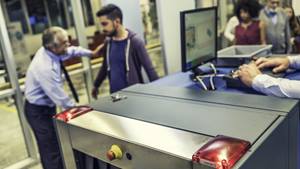
There have been several epidemics over the last few years caused by viruses that if not completely new to humanity, are new to us today at least. Our immune system - the group of cells tasked with fighting off infections - had never met these viruses before and so following infection was somewhat slow in reacting forcefully to the invading organism. If the illness overcomes enough of the body’s systems whilst the immune system is still preparing, severe infection can occur, sometimes resulting in death. The latest epidemic, dubbed the ‘2019-CoV’ at present, was birthed in the likely unhygienic food market in Wuhan, China.
 The mysteries surrounding the novel Coronavirus are receding, however. We know that the illness is caused by a Coronavirus – named after its crown-like appearance when seen by the electron microscope. It causes fevers in those affected, progressing to severe lung infections in some. This is an evolving situation, where facts and figures are changing daily. At time of writing, around 500 people are known to have been infected, resulting in the deaths of almost 20 people. Until only a few days ago, cases were identified by running a batch of tests for known viral infections – when they were all negative, the patient was deemed to be suffering from the unknown virus. In the intervening time, however, a preliminary test has been established, no doubt resulting in the sudden increase in reported cases. But the number of infections is now too large to be explained solely by this increased identification of true patients. The epidemic is clearly spreading. Spreading to further regions of China - and also much further afield. Now 13 districts of China have claimed patients, as well as Thailand, South Korea, Taiwan and Japan. The first case in the United States was announced recently: a man in his 30s in Seattle.
The mysteries surrounding the novel Coronavirus are receding, however. We know that the illness is caused by a Coronavirus – named after its crown-like appearance when seen by the electron microscope. It causes fevers in those affected, progressing to severe lung infections in some. This is an evolving situation, where facts and figures are changing daily. At time of writing, around 500 people are known to have been infected, resulting in the deaths of almost 20 people. Until only a few days ago, cases were identified by running a batch of tests for known viral infections – when they were all negative, the patient was deemed to be suffering from the unknown virus. In the intervening time, however, a preliminary test has been established, no doubt resulting in the sudden increase in reported cases. But the number of infections is now too large to be explained solely by this increased identification of true patients. The epidemic is clearly spreading. Spreading to further regions of China - and also much further afield. Now 13 districts of China have claimed patients, as well as Thailand, South Korea, Taiwan and Japan. The first case in the United States was announced recently: a man in his 30s in Seattle.
 That the outbreak is spreading so rapidly is perhaps unsurprising as Wuhan airport services planes both internally and to destinations such as Thailand, Japan, and Singapore – 545 travellers can arrive per day to Bangkok alone. Realising this risk, authorities have instigated airport screening at an increasing number of global destinations. Whilst some airports are simply measuring the temperatures of travellers from Wuhan, others are taking another approach. The challenge with airport screening is that symptoms start only after several days of infection. This means that an infected person might be feeling entirely well when undertaking airport screening, easily passing by the temperature gun, and unwittingly be able to start an epidemic in the newly arrived location. To counter this, the Australians are meeting each traveller from the flights from Wuhan, interviewing them for symptoms but at the same time, giving them information of what to do should they become ill over the following few days. In this way, there is no false-security that can result from a negative temperature check and a good chance that those infected will do the right thing.
That the outbreak is spreading so rapidly is perhaps unsurprising as Wuhan airport services planes both internally and to destinations such as Thailand, Japan, and Singapore – 545 travellers can arrive per day to Bangkok alone. Realising this risk, authorities have instigated airport screening at an increasing number of global destinations. Whilst some airports are simply measuring the temperatures of travellers from Wuhan, others are taking another approach. The challenge with airport screening is that symptoms start only after several days of infection. This means that an infected person might be feeling entirely well when undertaking airport screening, easily passing by the temperature gun, and unwittingly be able to start an epidemic in the newly arrived location. To counter this, the Australians are meeting each traveller from the flights from Wuhan, interviewing them for symptoms but at the same time, giving them information of what to do should they become ill over the following few days. In this way, there is no false-security that can result from a negative temperature check and a good chance that those infected will do the right thing.
 The Chinese authorities are doing much to try and curtail the spread of the virus from Wuhan. In addition to closing the food market thought to be the epicentre of the outbreak, they have now limited the sale of live stock in the city. Public activities have been cancelled; not an inconsequential act for both tourists and businesses alike in a metropolis of 11 million people in the midst of a festival period. The annual prayer-giving ceremony at the city’s Guiyan temple usually attracts 700,000 tourists alone. In addition, screening posts had been set up in Wuhan airport, its railway stations, and even highway checkpoints had been instigated. However, only today all public transport has now been shut down in Wuhan. In response to the outbreak, many have now chosen to wear surgical masks. For those infected, wearing a mask might reduce the risk of passing on the virus somewhat, but such masks are unlikely to protect a well individual from becoming infected. This is for several reasons: surgical masks cannot achieve a close fit to the face, are not able to stop inhaled viruses as the pore size is too large, and much transmission occurs by hand to mouth transfer. Employees following Pandemic Preparedness advice may well derive protection from using the specialised N95 mask, following training and regular mask replacement, but this is far removed from the simple surgical mask seen in ubiquitous use.
The Chinese authorities are doing much to try and curtail the spread of the virus from Wuhan. In addition to closing the food market thought to be the epicentre of the outbreak, they have now limited the sale of live stock in the city. Public activities have been cancelled; not an inconsequential act for both tourists and businesses alike in a metropolis of 11 million people in the midst of a festival period. The annual prayer-giving ceremony at the city’s Guiyan temple usually attracts 700,000 tourists alone. In addition, screening posts had been set up in Wuhan airport, its railway stations, and even highway checkpoints had been instigated. However, only today all public transport has now been shut down in Wuhan. In response to the outbreak, many have now chosen to wear surgical masks. For those infected, wearing a mask might reduce the risk of passing on the virus somewhat, but such masks are unlikely to protect a well individual from becoming infected. This is for several reasons: surgical masks cannot achieve a close fit to the face, are not able to stop inhaled viruses as the pore size is too large, and much transmission occurs by hand to mouth transfer. Employees following Pandemic Preparedness advice may well derive protection from using the specialised N95 mask, following training and regular mask replacement, but this is far removed from the simple surgical mask seen in ubiquitous use.
 As epidemics progress, trading and tourism are usually affected in short shrift. Even if the threat from the particular virus is relatively small, the fear of infection makes tourists stay away. Businesses can be fundamentally affected, altering organisational function, culture, and decimating both upstream and downstream processes. The situation can be easily compounded when the personal threat from an epidemic is considerable. Many are apprehensive that a new virus will soon emerge that will be both easily transmissible between people and produce severe symptoms. In this situation, ensuring that comprehensive Pandemic Preparedness has occurred is a business essential: protecting employees by minimising their risk of contracting the illness, establishing infectious disease protocols, and defining business continuity processes, will be crucial to the functioning of any responsible organisation.
As epidemics progress, trading and tourism are usually affected in short shrift. Even if the threat from the particular virus is relatively small, the fear of infection makes tourists stay away. Businesses can be fundamentally affected, altering organisational function, culture, and decimating both upstream and downstream processes. The situation can be easily compounded when the personal threat from an epidemic is considerable. Many are apprehensive that a new virus will soon emerge that will be both easily transmissible between people and produce severe symptoms. In this situation, ensuring that comprehensive Pandemic Preparedness has occurred is a business essential: protecting employees by minimising their risk of contracting the illness, establishing infectious disease protocols, and defining business continuity processes, will be crucial to the functioning of any responsible organisation.
At present, we’re not sure how serious the new Coronavirus epidemic will become. There have been two recent Coronavirus epidemics that have followed distinct courses: SARS (Severe Acute Respiratory Syndrome) and MERS (Middle-East Respiratory Syndrome). Both illnesses have emerged since the turn of the Millennium. SARS produced severe illness in a younger demographic than is often affected by respiratory illness, causing fears that the economically active members of society would be particularly devastated. MERS produced profound disease in those with pre-existing medical conditions, however, being particularly virulent in those with diabetes or other chronic illnesses. Although SARS has chiefly died out, regular MERS cases are still being reported from the Middle-East. Preliminary signs suggest the new Coronavirus may be more akin to the MERS virus - but more evidence is required.
Whether this new strain of virus proves to traverse the globe, severely affecting thousands, or not, one day a new virus certainly will do. Once established, a novel virus is perhaps unlikely to mutate to become the ‘killer virus’ beloved of tabloids, but the risk does remain that in the future a particular combination of infections in a herd of animals, produces a strain that not only escapes the control of our immune systems, but is easily transmitted from human to human.







